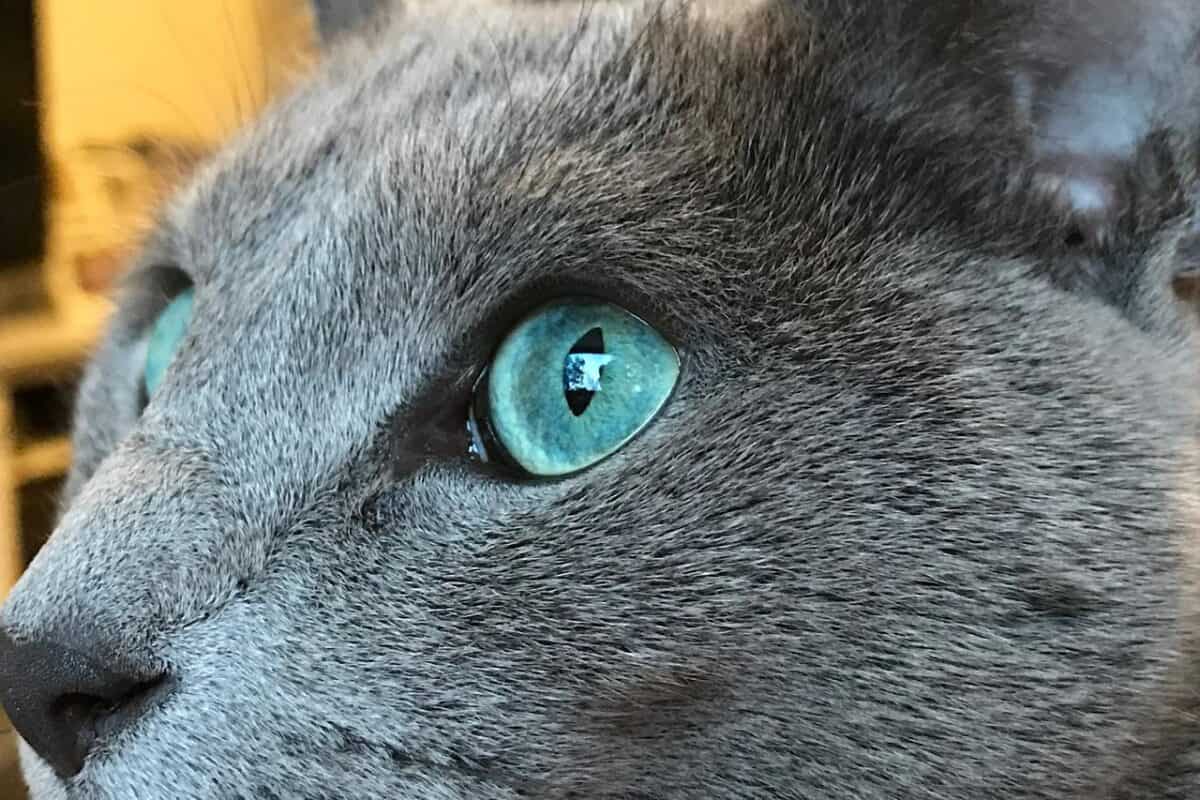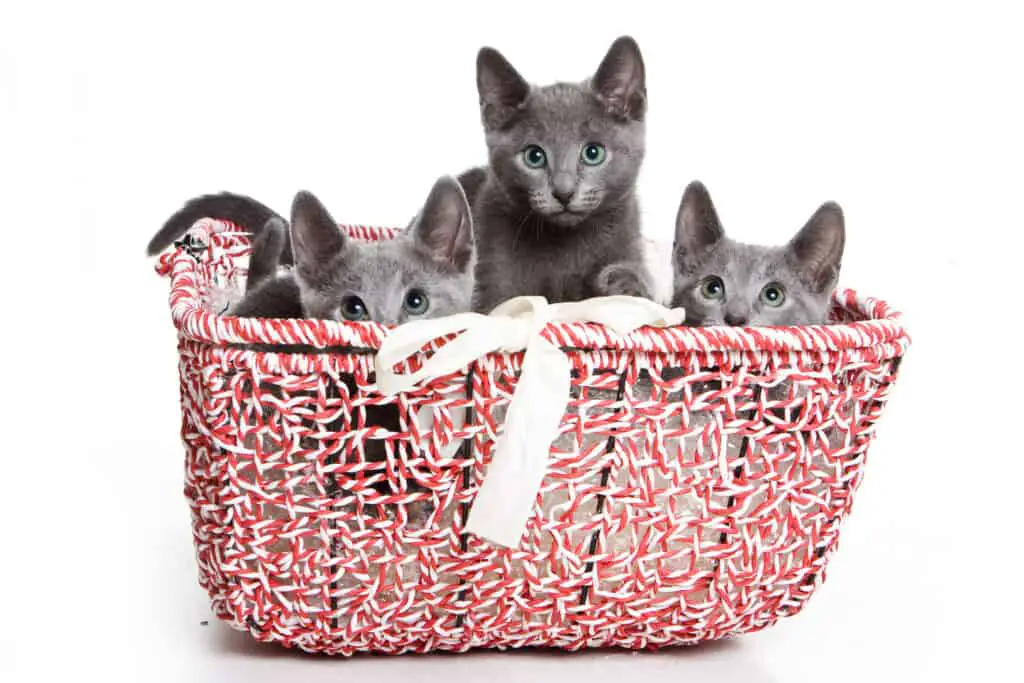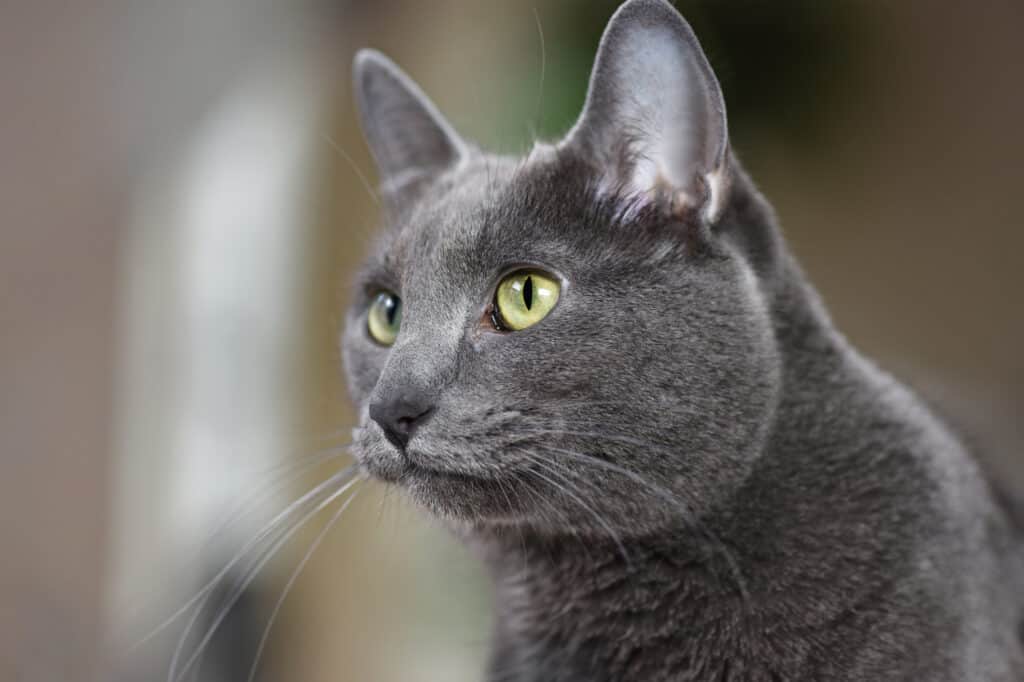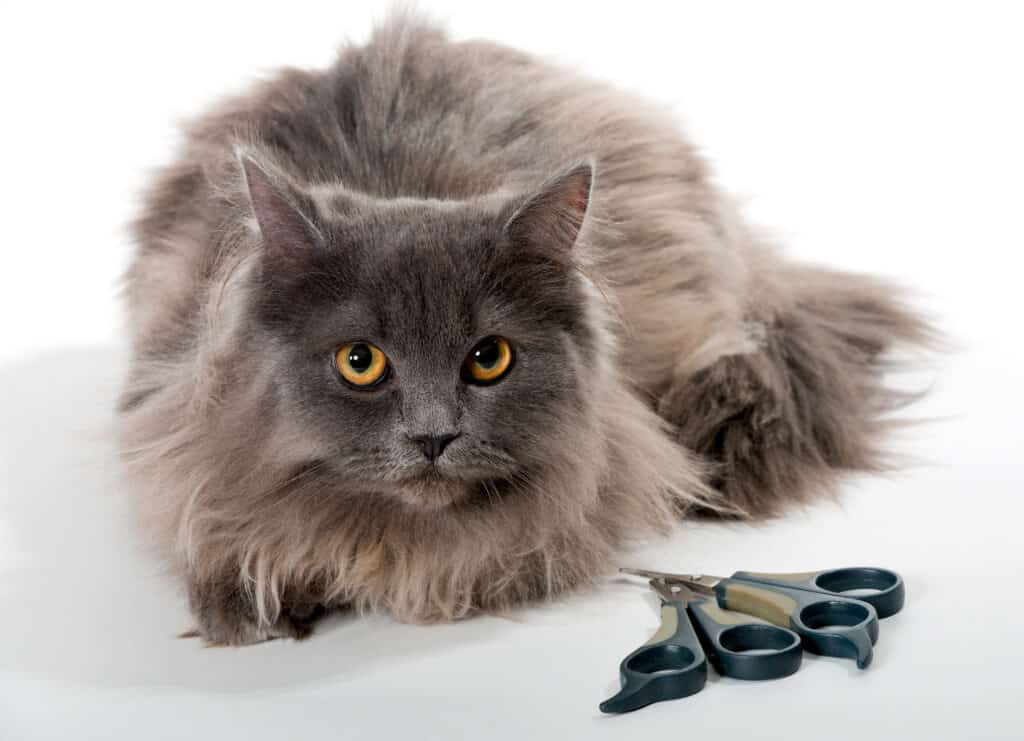The Russian Blue cat is a beautiful breed with a legendary history. They are known for their characteristic blueish grey, silvery coat, and triangular-shaped head. But another striking feature that Russian blues are known for is their sparkling, emerald-green eyes.
Can Russian Blue cats have yellow eyes? The simple answer to this question is – no.
Russian blue cats cannot have yellow eyes because their distinguished green eyes are what defines them as purebred Russian Blue. A cat cannot be officially certified as a Russian Blue if it does not have the green eyes typical of this breed.
Their bright green eye color is pretty unique among cat breeds, with most cats having yellow, gold, or amber-colored eyes.
Keep reading to discover what breeds may look similar to a Russian Blue but are, in fact, different breeds or mixed breeds, often confused with the noble Russian Blue.
At what age do Russian Blues get their green eyes?
The Russian Blue is a breed that is beloved among cat enthusiasts. Their unique coloring and features make them stand out, and their playful personality makes them a great family pet.
They’re also popular among those who breed show cats because the Russian Blue bloodline goes back a long way and has been carefully managed over the years.
You can learn more about Russian Blues here.
There are several breeds, however, that look similar to the Russian Blue. So, if you’re not sure if your grey cat is a Russian Blue, then a good way to distinguish them is to look for their bright green eyes.
So, at what age do Russian Blue kittens develop their green eyes?
Russian Blue kittens are born with blue eyes that fade yellow after a few weeks. This color eventually transitions to the striking bright green color around two months of age.
Do Russian Blues Eyes Change Colors?
Kittens don’t even open their eyes for seven to ten days after being born. When Russian Blue cats are born, they typically have blue, slightly clear-colored eyes.
This is because kittens are born without pigmentation in their eyes. The pigment doesn’t develop until around six weeks of age. The lack of pigment in their eyes causes them to appear bright blue.
t can take up to six months for a cat’s eye color to change into what it will be as an adult cat. Almost all cats are born with light-colored blue eyes. As they grow, their eye color changes into what it will be as fully grown adult cats.
Russian Blue kittens are born with blue eyes that slowly change to yellow. They will then develop a green ring around the iris and eventually will have green eyes after about six months.
The shade of green of Russian Blues’ eyes can vary. Some will have a very light shade of green, while others will develop a very vibrant, emerald green color.
Most cat breeders favor the Russian Blues with eyes that are the deepest shade of green.
Why Do Russian Blues Have Green Eyes?
The color of a cat’s eyes is determined by genetics. The intensity of that color is decided at the cellular level. The amount of melanin determines the intensity of the color, and melanocytes determine the hue of the color.
The reason breeds have a specific eye color is actually because of humans!
Selective breeding has strengthened the genetic lines of cats with specific eye colors, and humans did this because we liked it better that way!
So, for centuries, humans have selectively bred Russian Blues with the brightest shade of green in their eyes, resulting in a dominant genetic trait that is now present in all cats of the breed.
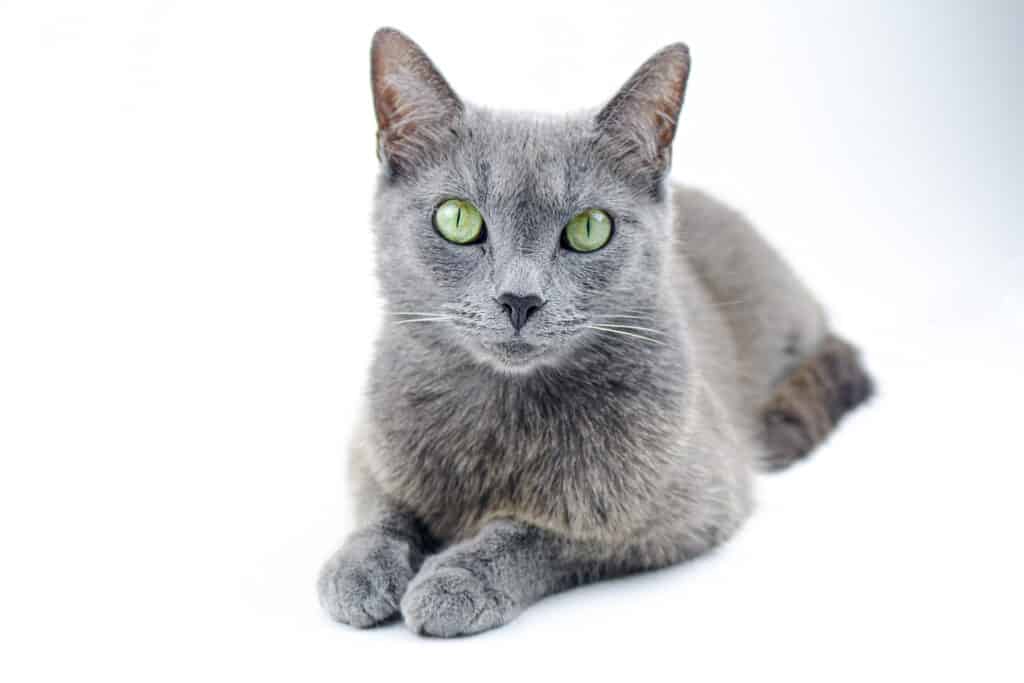
What if a Russian Blue Has Yellow Eyes?
If you have a cat that you believe is a Russian Blue, but they have yellow eyes instead of green, then it’s most likely not a purebred Russian Blue.
Mixed breeds, or those cats with a heritage that comes from more than one breed lineage, will often have different colored eyes as a result.
This doesn’t mean your cat won’t make a great family pet! But if you want to register your feline as a genuine purebred Russian blue, they must have the characteristic green eyes.
Other reasons that a purebred Russian Blue could still have different colored or yellow eyes might be related to illness or disease.
Certain disorders and diseases that affect the eyes could change the coloring slightly. These include things like conjunctivitis, cataracts, and glaucoma.
Is Your Russian Blue Actually a Chartreux?
One cat breed, in particular, is often confused for the Russian Blue because they share the same greyish silver coat color.
That breed is known as the Chartreux and hails from France. But there are differences you can look for to help determine if your feline friend is a Russian Blue or a Chartreux.
The first is the eye color. Russian Blue cats always have green eyes unless they are a mixed breed and not purebred.
If this is the case, they could have some of the Russian Blue bloodlines without being 100% Russian Blue, and their eye color may vary. A Chartreux breed has eyes that are either golden, yellow, or amber.
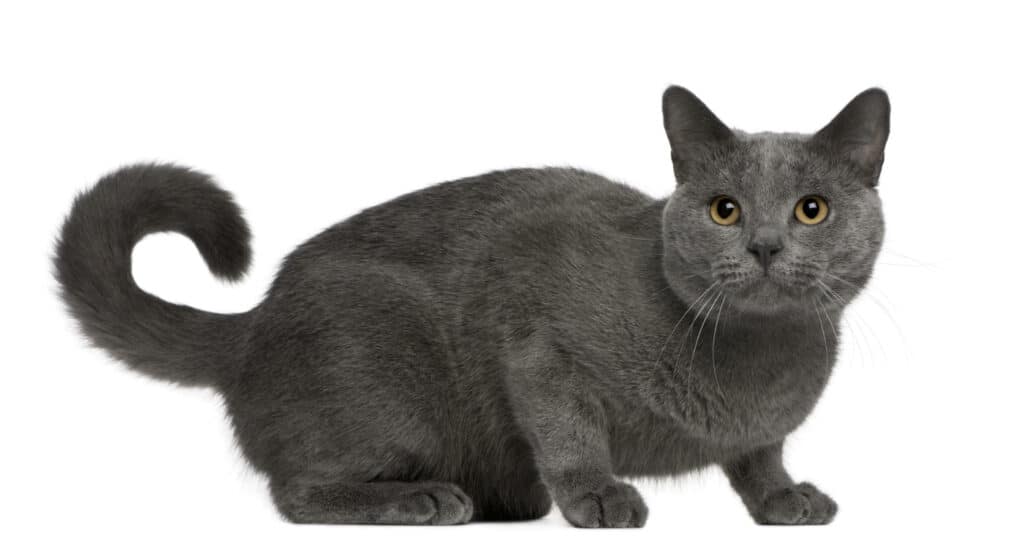
The Chartreux cat tends to be thicker and more muscular in stature than the Russian Blue, who are more likely to be long, lean, and slender in build. And their head tends to be more rounded, while the Russian Blue cat has a noticeable triangular or wedged-shaped head.
And the Chartreux has stereotypical strong jaws and prominent cheeks due to their heritage as a mouser cat. This is because the breed was initially intended to hunt vermin.
Want to know more about the differences between Russian Blue and Chartreux cats? Have a look at our post: The Differences Between Russian Blue and Chartreux cats.
Conclusion
So now we know more about the beautiful Russian Blue breed and its dazzling green eyes. Russian Blue kittens (and most kittens generally) are born with blue eyes.
In the case of the Russian Blue, the eyes slowly change from blue to yellow to green as the cat matures. True Russian Blue cats will always have green eyes as adults.
Russian Blue cats are often confused with other breeds, like the Chartreux or mixed breeds.
Love reading about cats?
Then you will love our other content as well. Have a look at these popular posts on our website.
-
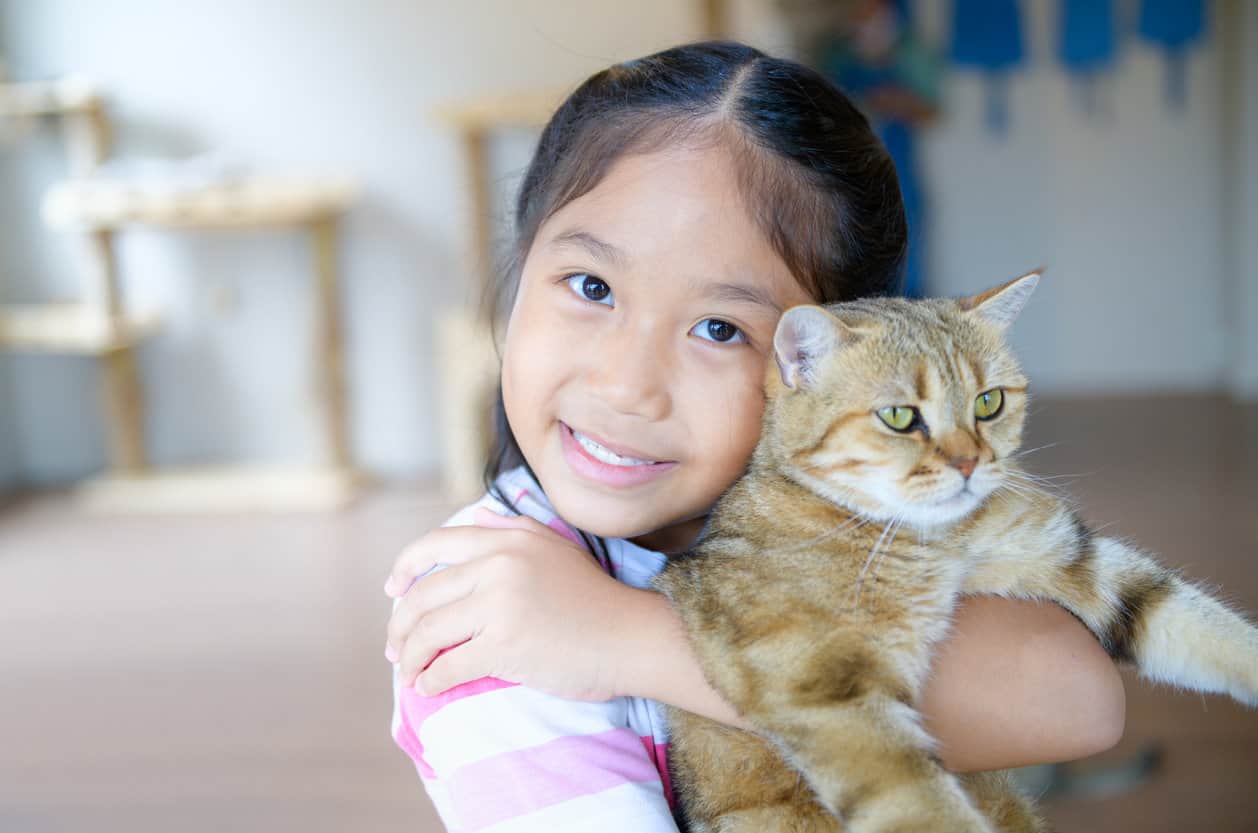
10 Ways to Make Your Cat Live Longer
The oldest cat to ever live passed away at the old age of 38. On average, household cats live between […]
-

12 Reasons Why Siamese Cats Cry at Night
Siamese cats are a popular breed of cats that many people choose to have as pets. Perhaps you have heard […]
-
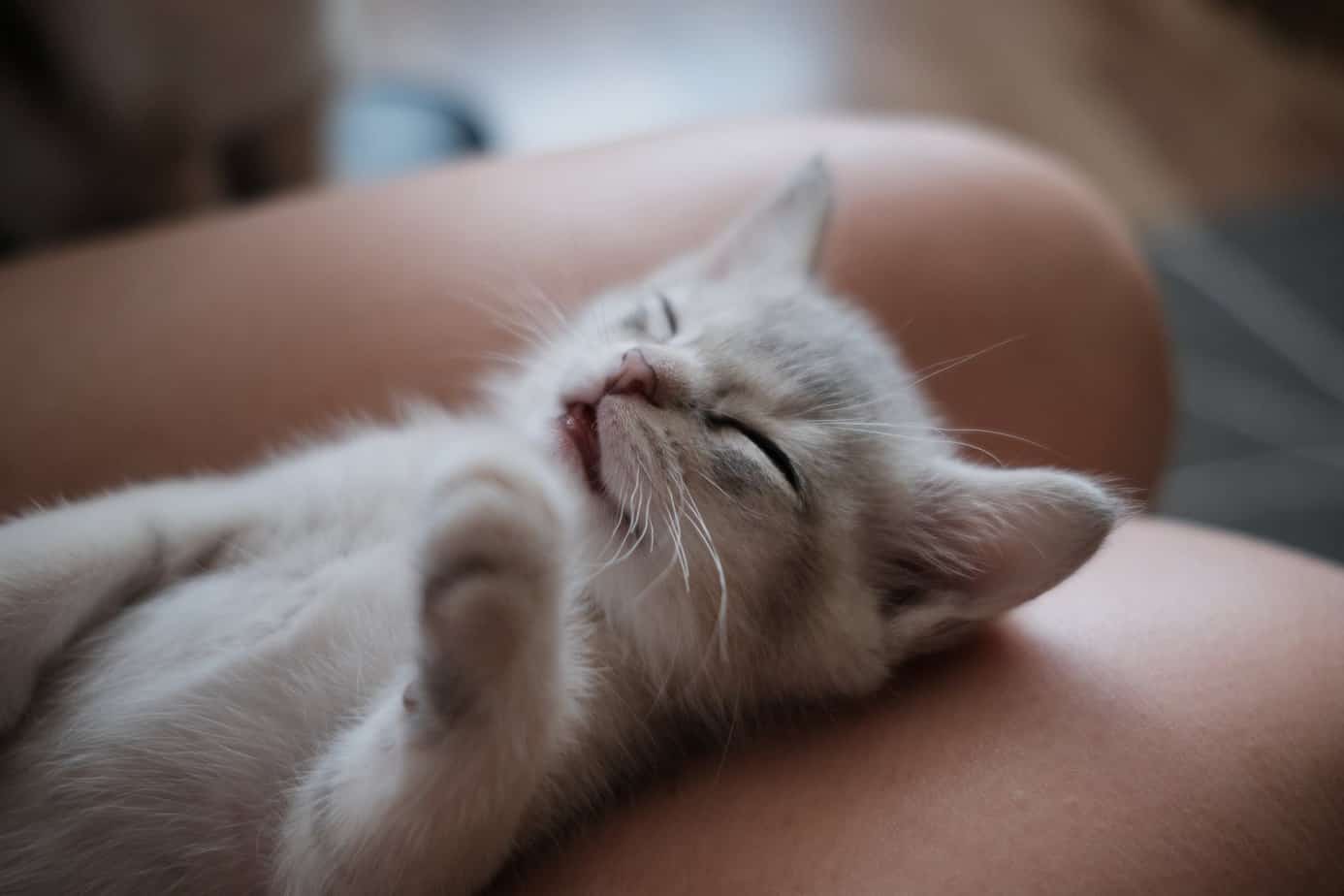
15 Incredible Ways That Cats Show Affection For Humans
Wondering how cats show their affection for humans? We have listed several incredible ways that cats are trying to show their love for us.

